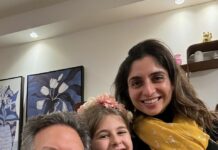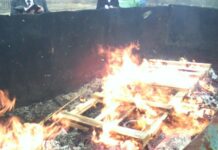The Baltimore Jewish Council, in partnership with the Jewish Museum of Maryland, will be holding its annual Summer Teachers’ Institute from Aug. 1-3. The program is designed to help educators teach about the Holocaust, giving them tools to educate their students about the tragedy in a mindful and informative manner.

The two organizations hold Teachers’ Institutes at the museum twice a year, in the winter and summer. Regardless of when they are scheduled, though, they typically focus on the Holocaust. Past institutes have focused on women and children during the time period, as well as spiritual resistance against the Nazi regime.
But this summer’s program will take a different approach. Rather than focusing on a specific part of the Holocaust, it is meant to be a more foundational program on how to teach about the genocide. The context and pedagogy behind the Holocaust are essential for both educators experienced in the subject and newcomers.
“For so many reasons, it is important that we continue to teach about this history that is not so distant,” said Emily Braverman Goodman, director of Holocaust and countering antisemitism programming at the BJC. “So many young people have a misconception that this took place so long ago, but we’re still living amongst survivors. And with the alarming rate of antisemitism all around the world and especially even in our own country, It’s so important to share what has happened and why we need to learn about it to prevent it from ever happening again.”
The Teachers’ Institute takes place over three days, with two located at the Jewish Museum of Maryland and one at the United States Holocaust Memorial Museum. The USHMM is one of the leaders of Holocaust education in the U.S.
“We work in partnership with the United States Holocaust Memorial Museum through a partnership network,” said Marisa Shultz, education program manager for the Jewish Museum of Maryland. The JMM and USHMM are both part of the Conference for Holocaust Education Centers, a network of museums and education centers that teach about the tragedy. “Our partnership has only gotten closer now that we’re part of this partnership conference for Holocaust education centers.”
Both museums will be providing a variety of primary sources for educators to work from, including photographs and a planned speech from a Holocaust survivor.
Survivors are “a primary resource that is unfortunately so limited, because we’re unfortunately losing our survivor population,” Goodman said. “I think the most valuable teaching tool is utilizing first-person survivor testimony, so students and teachers can understand [the Holocaust] was a real thing that happened to this person. This was their experience and their life story.”
She also said that the institute has traditionally been held in museum spaces due to the sense of community they create, as well as their access to educational resources. Museum staff will be working together with the BJC to provide insightful and interactive programming to guests.
“I like to tell people that the institute has three goals,” Shultz said. “The first [goal] is to connect teachers and education professionals with accurate and scholarly information about the Holocaust, especially in this age of misinformation and disinformation. The second goal is to provide them with classroom-ready resources. … And then the third thing, which is the thing that I’m personally the most passionate about, is having conversations around pedagogy. How we teach about the Holocaust, not just the content, but how we actually approach it in the classroom in a way that is meaningful and nuanced and sensitive
and responsible.”
Participants in the institute are not just teachers — administrators, school counselors and psychologists and other educators often attend to get a better understanding of the subject. Goodman hopes that the institute will make them more comfortable with and confident in their ability to teach this difficult history to their students.
“It’s upsetting history, and it can make both students and educators feel uncomfortable, but I hope that we can equip these educators with the necessary tools and resources so they feel capable of teaching this history,” she said.







